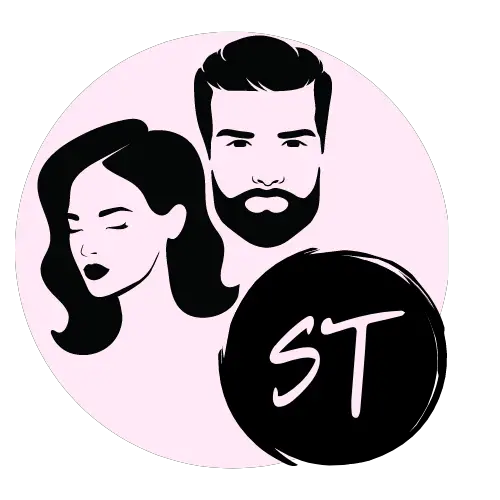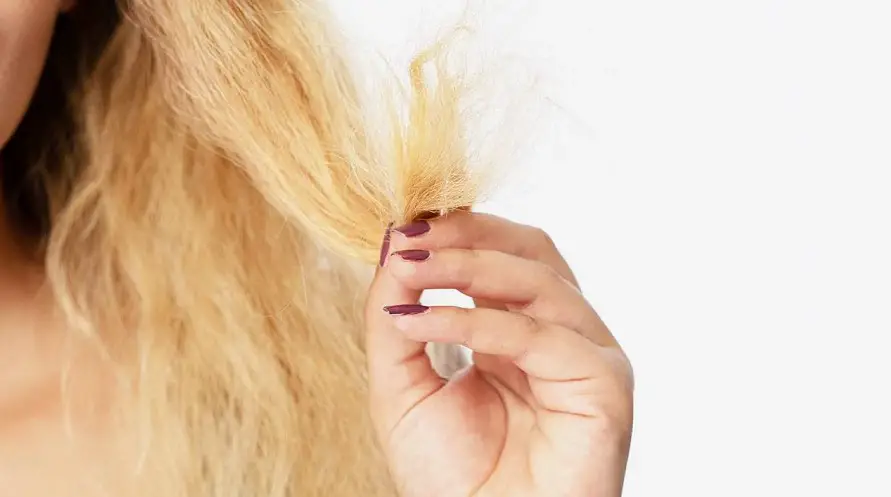I’m Amelia. I have been working with hair care product shampoo and conditioner for 6 long years. This website is an outlet of my deep...Read more
Have you ever wondered why people have been trying to dye their hair for thousands of years? For some reason, we human beings like blonde hair. And we do our best to minimize the damage we cause. It doesn’t always work, unfortunately, and we have to manage the crisis. Today, we are on a hair rescue mission to make bleached hair beautiful again.
For centuries, people used various means to obtain blonde hair. The means have changed throughout the years, from the ashes of plants and nuts in Ancient Rome to the mixtures designed in the most advanced labs that we use now.
One thing has remained unchanged. It’s still a procedure that can leave you with damaged hair: lifeless, dry, and wild.
Technological progress hasn’t played only a positive role. While the bleaches are becoming gentler, the styling devices we use can be very aggressive and even lead to hair loss. But that’s our life.
There is always a balance between good and evil.
Before we begin our rescue mission and tell you in detail how to make bleached hair soft and silky, let us focus on the bleaching process itself.
Aren’t you curious about what’s happening to your hair while you’re sitting in a chair with a cup of coffee and reading a magazine?
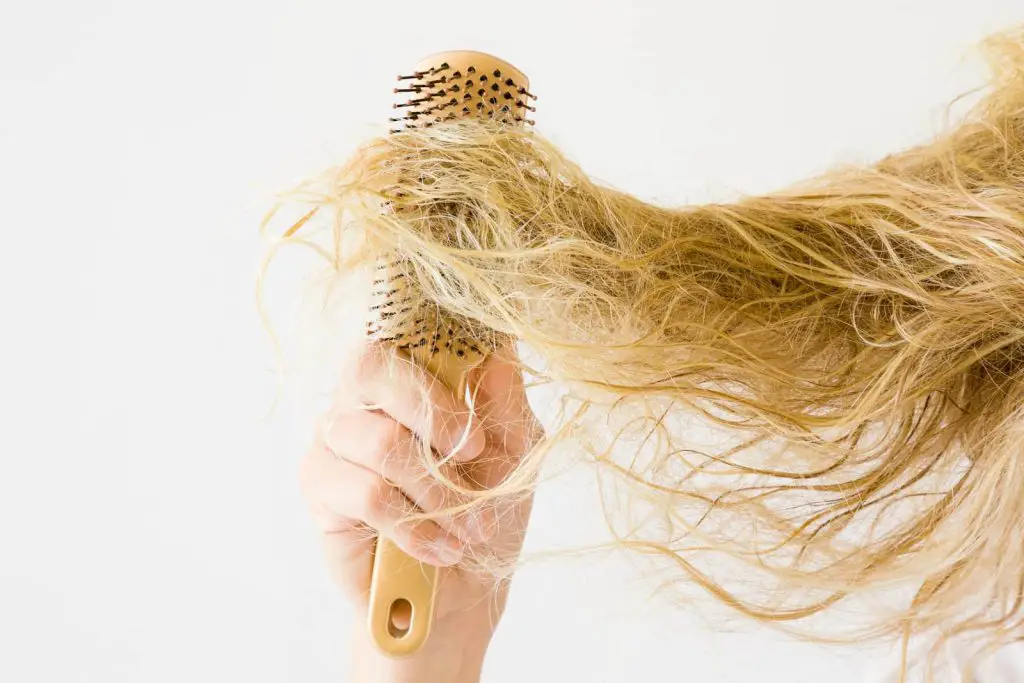
Table of Contents
The bleaching process. What’s really happening?
It’s all about melanin. This pigment is responsible for our natural hair color. So, logically, to bleach hair means to dissolve this pigment and substitute it with the color of our choice.
But melanin is located in the cortex of the hair, not in its outer layers. That’s why we need an agent to get there. This strong alkaline agent gets to the hair cuticle, opens it, and then reaches the middle layer called the cortex. Here it completes its mission and dissolves the melanin.
As you can see, there’s a lot of penetration and destruction going on here. Exposure to the aggressive agent can lead to protein loss and result in split ends and brittle, dry hair. It will look and feel like a loofah or like straw, wild and dull.
That’s why bleaching is a time-sensitive operation. The exposure period is absolutely crucial.
We all know of at least one horror story about a woman who lost half of her hair after being forgotten by the hairdresser. So scary.
Fortunately, such stories almost never happen because you usually entrust your hair to a reliable professional who is aware of all the potential risks and uses quality bleaches.
Everyday care helps us maintain healthy hair shining and silky, and facilitates hair growth, and overall beauty. And bleached hair needs even more attention after exposure to harsh chemicals. That’s why, we recommend maintaining a hair care routine, pampering your hair with high-quality products, and thus avoiding dry or damaged hair.
Besides, keeping your hair healthy can become an enjoyable treat. How? We’ll tell you in the next part of the article. Read on and find out how to make bleached hair soft and silky and enjoy the process.
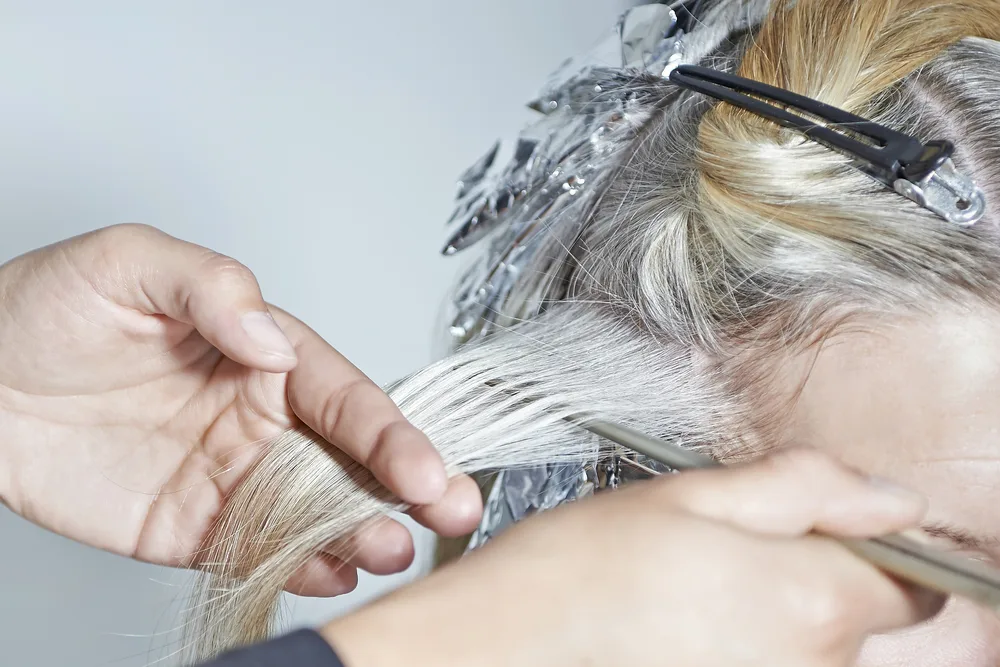
Bleached hair rescue mission
So, the objective of the mission is to make bleached hair soft and silky, to give it a sleek and glossy look. For our mission to be successful, you need to be diligent and follow the routine. And it will be a win.
Be smart with shampoo choices
Your first choice, of course, is the shampoo (and the conditioner) designed specifically to cater to the needs of bleached hair. They will have a special formula, providing repair and protection for your hair.
And not only that, shampoos for bleached hair have components that will help you keep the new color fresh as long as possible.
You can also use color-depositing shampoos. They restore and protect the hair, but they have an additional function of minimizing yellow undertones, which can be a pain for bleached hair. These shampoos vary in color depending on the hue of the undertone you want to get rid of. In the case of bleached hair, the shampoos are purple.
Another good choice is a hydrating shampoo. As you know, dry hair can be one of the negative effects of bleached hair, and a hydrating shampoo can tackle the problem by moisturizing the hair and reinforcing your hair shaft.
Hydration is extremely important for hair, and a quality hydrating shampoo will be a great help.
Choose a special conditioner
A powerful tool you can have at your service is a deep conditioning treatment. Unlike a standard conditioner, a deep conditioner is not supposed to be used every time you wash your hair.
It’s an effective and easy-to-use product that will moisturize and help retain moisture in your hair strands, while also enriching your hair with vitamins responsible for its health and beauty.
Make sure you buy a quality deep conditioner targeting bleached hair specifically.
Deep conditioning treatment is not the same as using a regular conditioner. Here we need extended exposure.
Apply it after washing your hair with shampoo on damp hair. Make sure you cover all the hair, including the roots, the ends, and the scalp too. Leave it for about 30 minutes, then wash it off. Easy but effective.
Leave in conditioner — a part of the rescue plan
Part of the plan of how to make bleached hair soft and silky is using a conditioner that you won’t rinse off and will wear on the hair for a whole day. This means that the exposure to vitamins, natural oils, and protein will continue for hours.
The result — is hydrated and nourished hair, lasting color, stronger hair shaft, your hair gets thicker (a leave-in conditioner usually contains thickeners) and isn’t frizzy or brittle.
Apply the leave-in conditioner after washing and conditioning your hair. Use a comb to distribute the product evenly. Wait until your hair dries and then style it.
A leave-in conditioner typically has some styling properties, but they are really mild. The focus of the product is on protection and restoration.
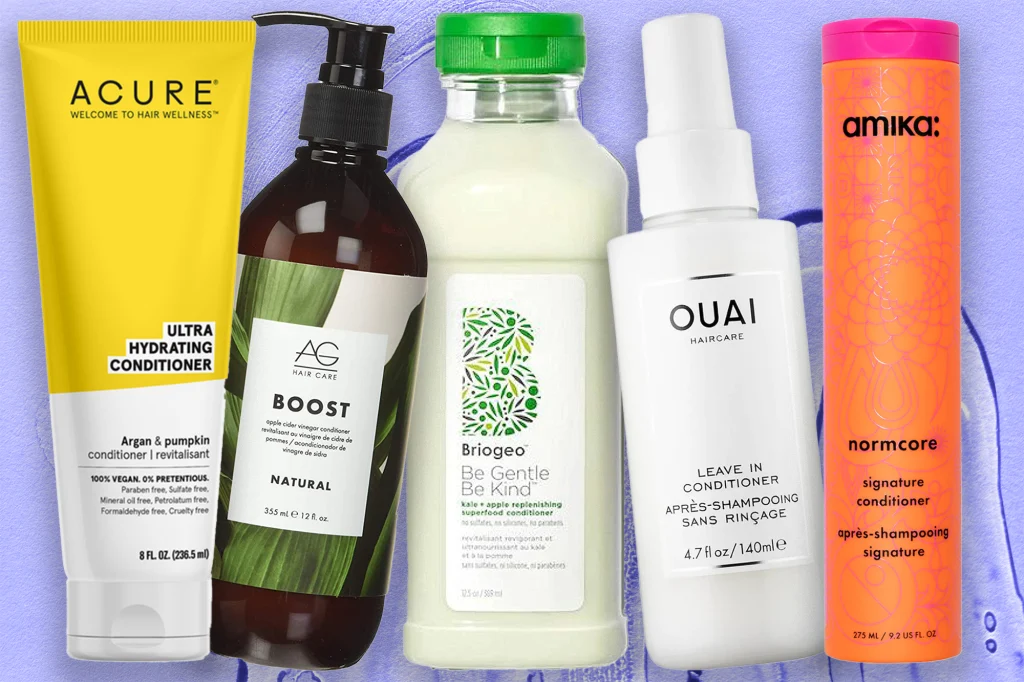
Avoid daily wash
If washing your hair is part of the daily routine, you may have to reconsider it.
Natural oils are already lacking in bleached hair, and washing off the little that still remains will not result in soft and silky hair. With an everyday wash, you can end up with dry, dull, and brittle hair which is impossible to style. Try washing it at least every second day.
That should help already.
If you feel greasy and uncomfortable without washing your hair every day, use a dry shampoo. It won’t negatively affect bleached hair and will make you feel better.
Mask it
We’ve walked you through the hair bleaching procedure and shown why bleached hair can get easily damaged. And now we’re presenting you one of our favorite tools for damage control.
How to make bleached hair soft and silky? — Hair mask is the answer. One of the most effective ways to nourish hair, moisturize it, take care of the hair shafts, and make hairstyling easy and fun.
The healing power of the hair mask breaks through all the outer layers and gets right to the hair shafts.
We apply a hair mask on clean wet hair (after washing it with shampoo). The distribution of the product can vary because there are hair masks targeting specific areas, like hair ends, for example.
If the mask should affect all the hair and scalp, we generously apply it and mildly massage the mask into the scalp. Then cover the head with a cap or a towel for a stronger effect.
If the instruction on the product doesn’t specify otherwise, we keep the hair mask on for 30 minutes. That’s an ideal period to achieve the maximum effect of the product. We relax and enjoy the pampering.
The mask will make your hair feel revitalized.
Commercial hair masks
Buying a high-quality ready-to-use hair mask is a good and time-saving idea. Masks from reliable manufacturers contain natural kinds of butter and oils that are rich in vitamins and microelements and will work tirelessly to make your hair healthy.
The components used in the hair masks designed especially for dry or damaged hair are argan oil, coconut oil, olive oil, and such butter as cocoa and Shea. They are excellent moisturizers and providers of essential nourishment.
Home-made hair treatment
If you have a little extra time to spend, making a deep conditioning mask yourself is also a great choice. This way, you can control all the ingredients going into the mask and their quality.
Basically, you can use the oils that we mentioned before as a mask, applying them on the hair and massaging into the scalp. Coconut oil, for example, is becoming more and more popular. Coconut oil masks are widely used for damaged hair restoration.
There are also superb masks you can make from the ingredients that we usually keep at home.
For example, an excellent nourishing mask from 2 tablespoons of honey, 1 egg, and 1 tablespoon of olive oil. Mix thoroughly and massage into the hair and scalp.
Or another one with a half avocado mash, a bit of olive oil, honey, and yogurt. It even sounds delicious. Your hair will love it.
Get rid of sulfates
Sulfates are often added to shampoo to create a frothy lather and clean the hair grease and dirt. Unfortunately, they also strip the hair of natural oils and moisture. They are too harsh and can make bleached hair dry and brittle.
We recommend getting rid of them and using sulfate-free shampoos designed for bleached hair.
Ensure sun protection
We all know the rule: protect your face and body from the sun. But we sometimes forget that aggressive sun rays are damaging to our hair too. Especially if it’s bleached.
Wear heat protectants and cover your head from sun exposure. Bleached hair is more vulnerable to an aggressive environment.
Blow and style with care
Heat styling tools are super convenient and save a lot of time. Unfortunately, they also dehydrate your hair.
Irons and other heat-styling tools make bleached hair brittle and dull.
But what can we do if we need to style? Our advice is, don’t do heat styling every day; use heat protectants and an antifreeze hair serum to minimize the damage. If you use special products for bleached hair, they can contain ingredients preserving the hair color.
We’re also rooting that you let your hair air dry. A blow dryer will not make your bleached hair healthy and soft. If you don’t have any choice, use the protection we’ve just mentioned and set the blow dryer to the lowest possible heat.
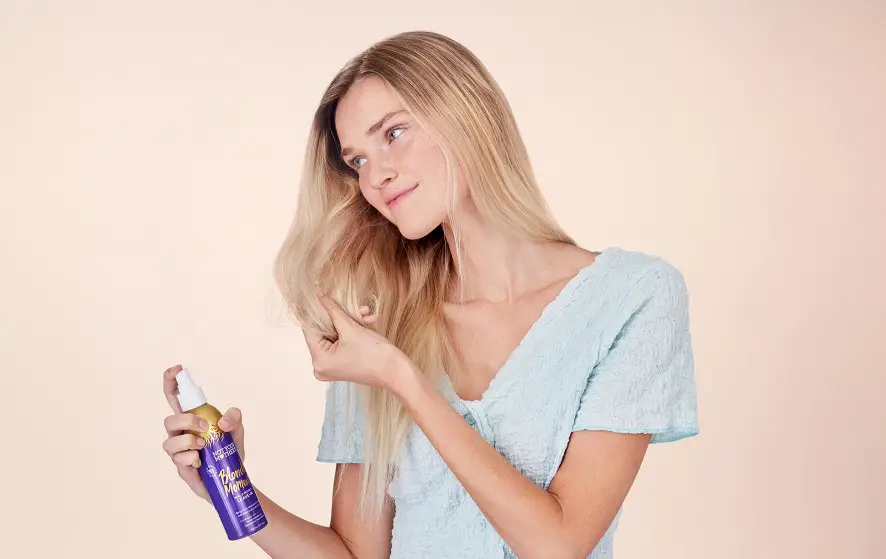
Brush with caution
One more piece of advice on how to make bleached hair soft and silky — invest in a good brush. You need to be extra careful after bleaching your hair. The hair shaft is fragile, which can make your hair brittle and cause split ends. Use high-quality brushes and combs and brush gently. When the hair is bleached, it’s prone to tangle.
Don’t rush when you detangle it. Do it carefully strand by strand and only after you finish, start brushing all the hair at the same time.
Sleep on silk
You can indulge in silk or satin bedding even if you are a minimalist because they are perfect for your hair. Silk or satin pillowcases will keep bleached hair soft and silky (silk for silky hair, right?) and protect it from getting frizzy.
Both silk and satin are very delicate fabrics, that’s why they are recommended for damaged hair. They are also not porous and don’t dehydrate the hair, but quite the opposite. Silk and satin will help retain moisture in the hair.
Pamper your hair with special treatment
We have a couple of recommendations for luxury hair treatment. They will make bleached hair soft and silky efficiently and fast.
Protein treatment
When it comes to hair damage control, protein is a great choice. We suggest 2 protein treatments.
Collagen treatment
We all know that our body produces collagen. Skin and hair contain it, and after bleaching, we need to restore its amount.
That’s where collagen treatment comes into light.
The amino acids in collagen rebuild hair proteins and strengthen the roots.
The hair after collagen treatment shines with health and vitality.
Keratin treatment
Keratin is a protein component of the hair, nails, and skin. That’s why keratin treatments are so good. They restore the nutrients that your hair loss, thus strengthening your hair and making it sleek. Curly hair often becomes straighter after keratin treatment.
Visit your hairdresser often
Freshen up your style more often if you bleach the hair. Regular trims are essential for healthy growth and for preventing split ends. It will be good for the overall look too.

Final thoughts
When you bleach your hair, you traumatize it, no matter how high-end the bleaches are. That’s out of your control. But what you can do is restore and revive your hair, making it silky and shiny again. That’s why we wrote this article — to let you shine even with bleached hair.
Frequently asked questions
It usually takes a couple of weeks if the procedure was done properly. And if you use the recommendations from our article like using hair masks, heat protection, special shampoos for bleached hair, and protein treatments. Be gentle with your hair, use a good brush, and don’t style with heat styling tools too often, and your hair will recover faster.
Bleaching is a damaging procedure, it dehydrates your hair and strips it from its oils. That’s the reason for the frizzing. When the hair is too dry, it looks lifeless and is hard to style. Consider doing damage control and using some of the tools we are suggesting in our article.
Begin with using special shampoos and conditioners for damaged hair. They target dehydration and undernourishment.
Add some extra treatment: a mask (an olive oil treatment can do wonders), protein treatment, or anti-frizz serums are very effective.
Your hair was dehydrated by an aggressive bleaching agent, and it now doesn’t contain enough nutrients and natural oils to be silky and shiny. It needs proper moisturizing and nutrition after exposure to harsh chemical elements.

I’m Amelia. I have been working with hair care product shampoo and conditioner for 6 long years. This website is an outlet of my deep passion for hair, Shampoo and Conditioner. Basically, I'm here to guide you on shampoo and conditioner.
